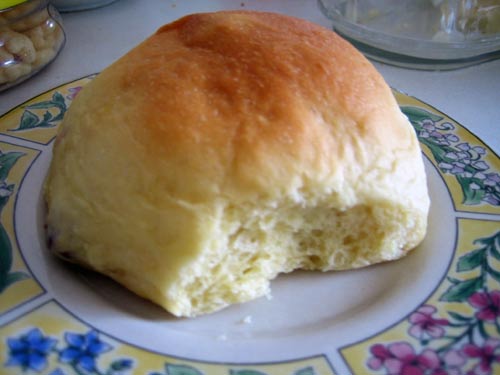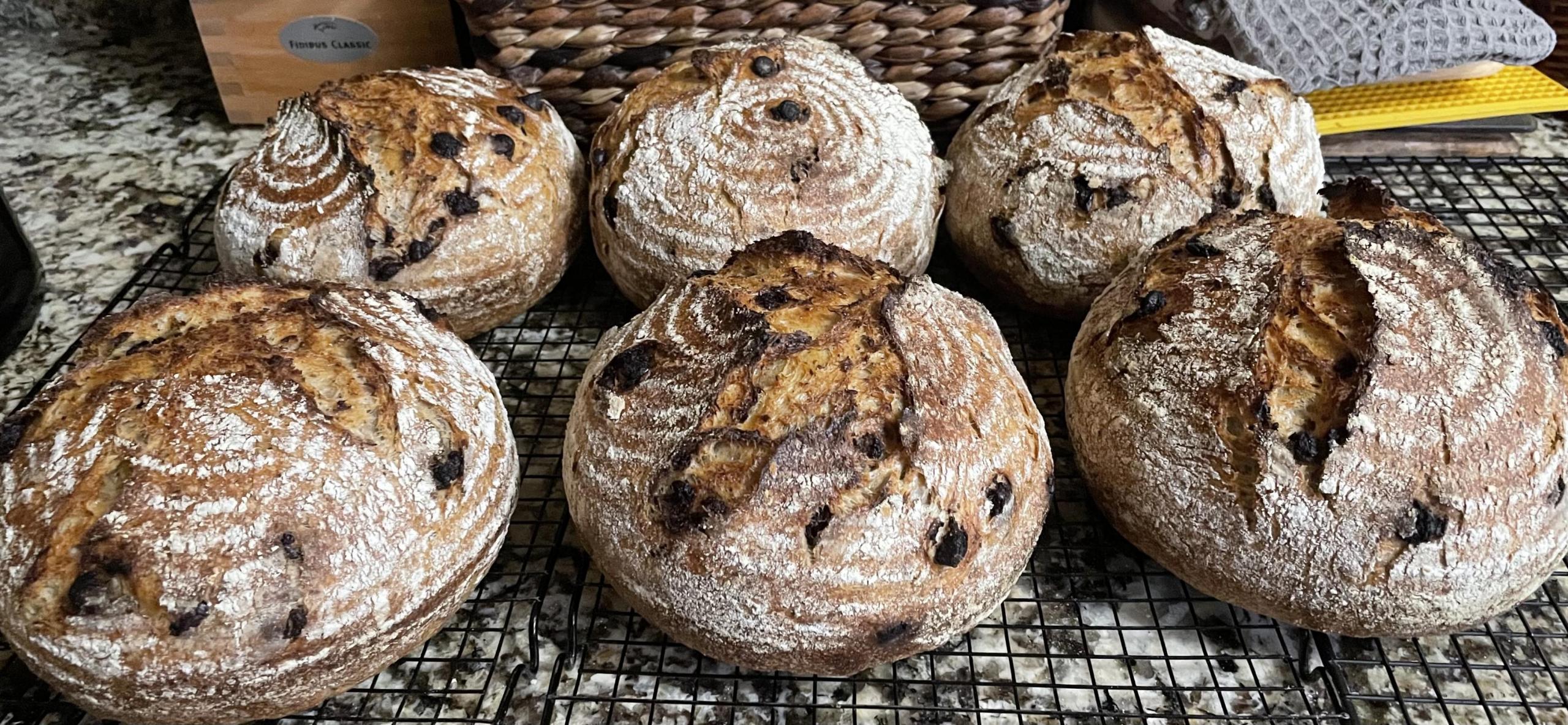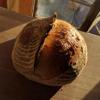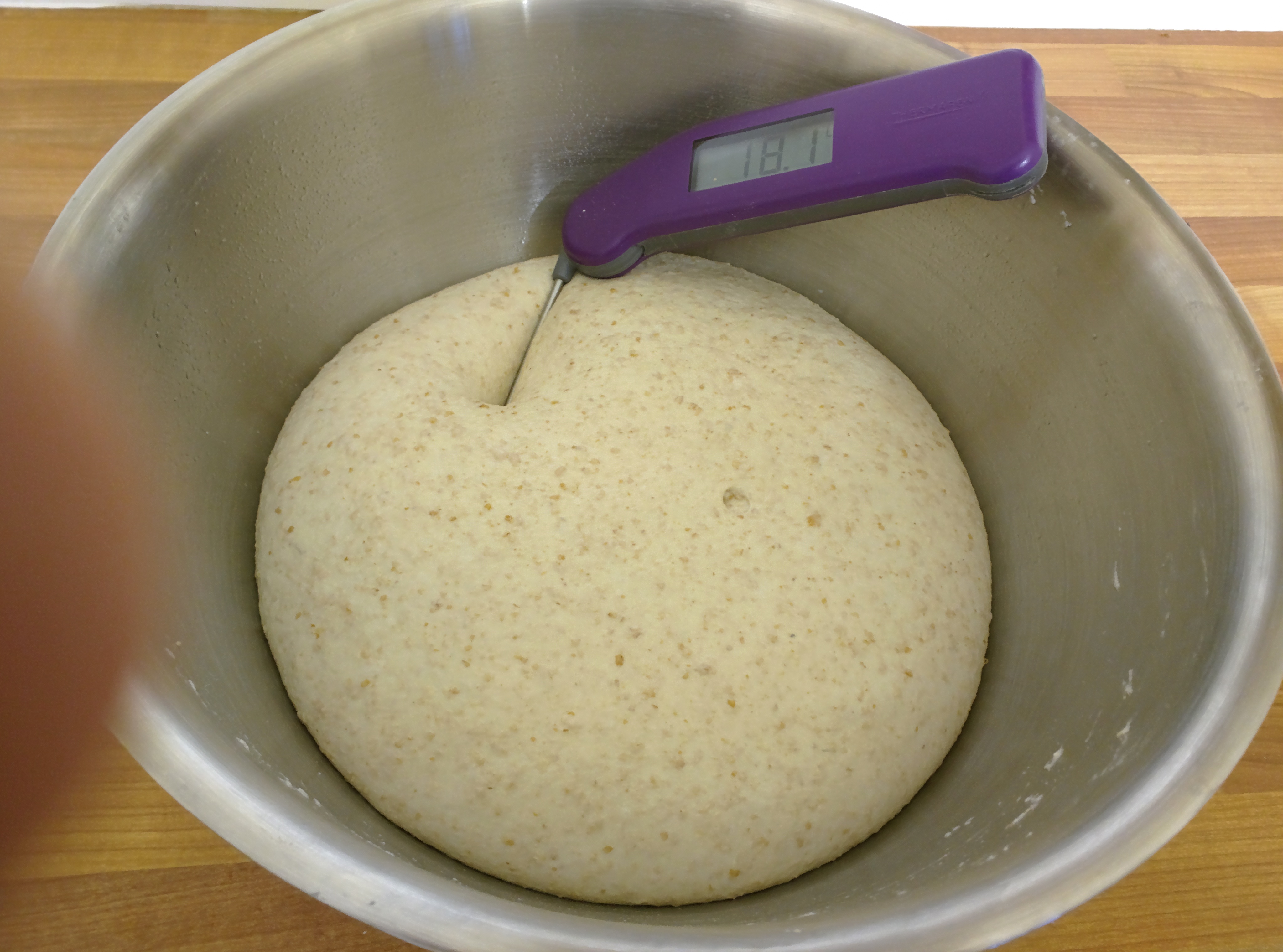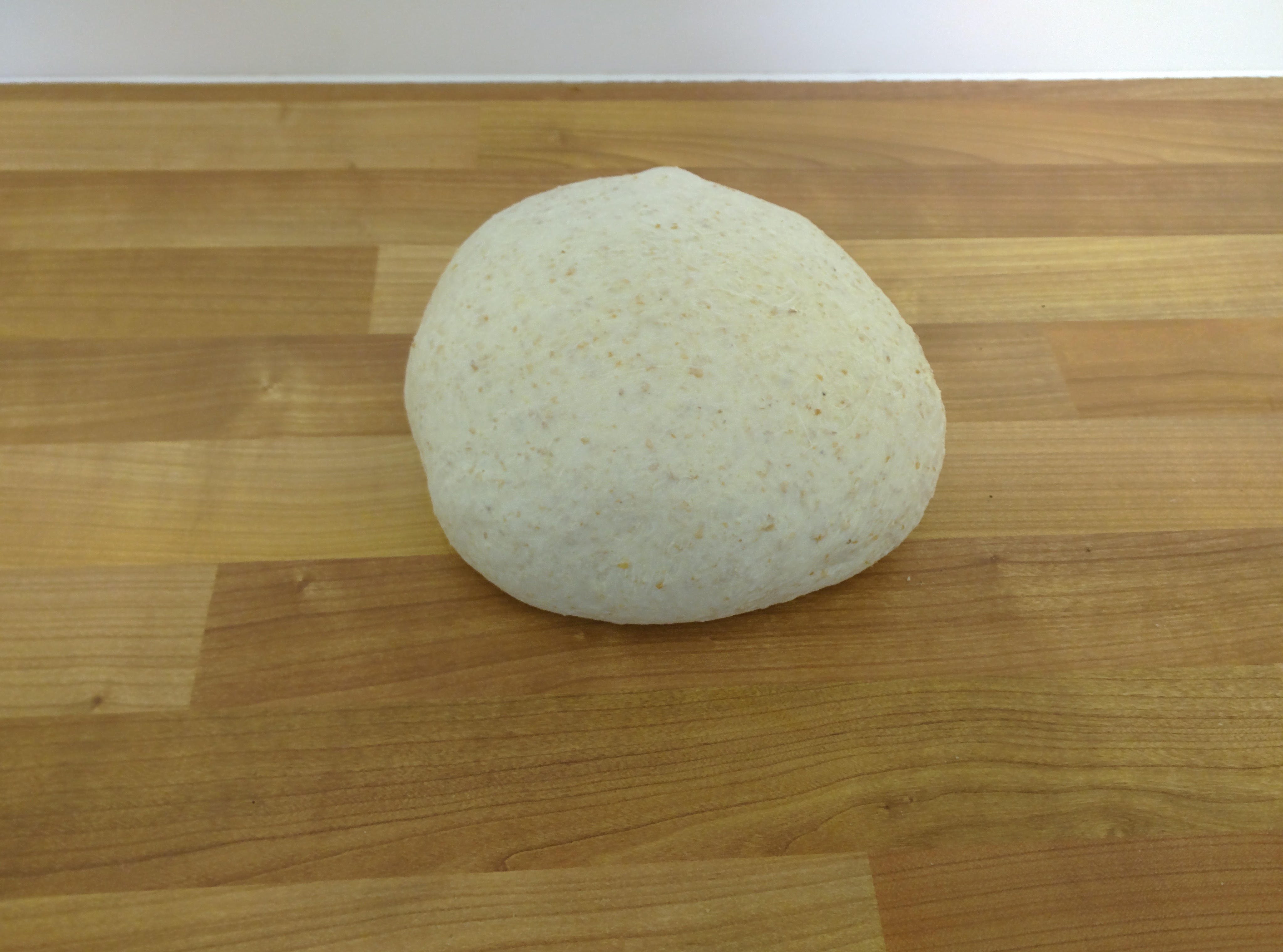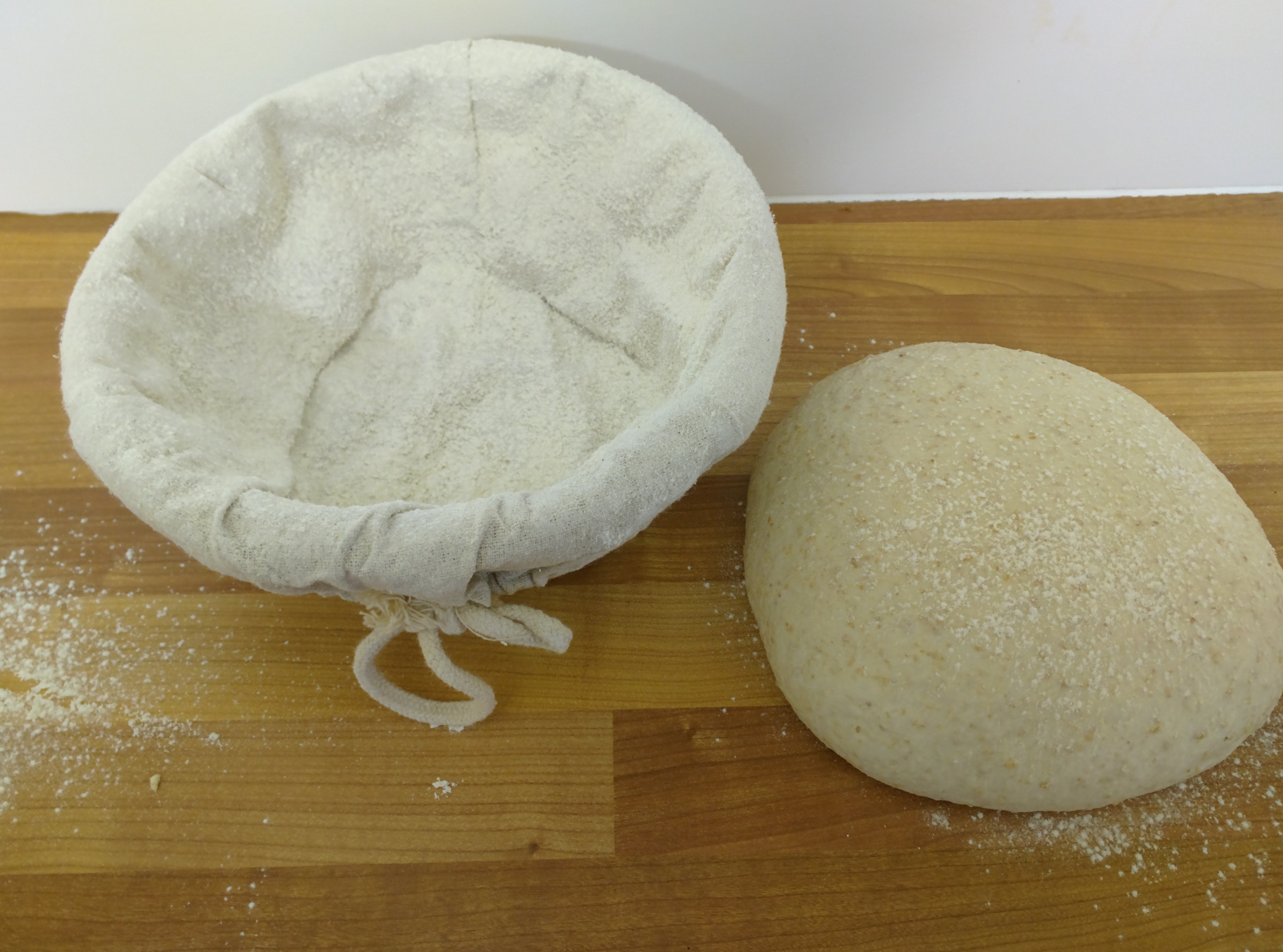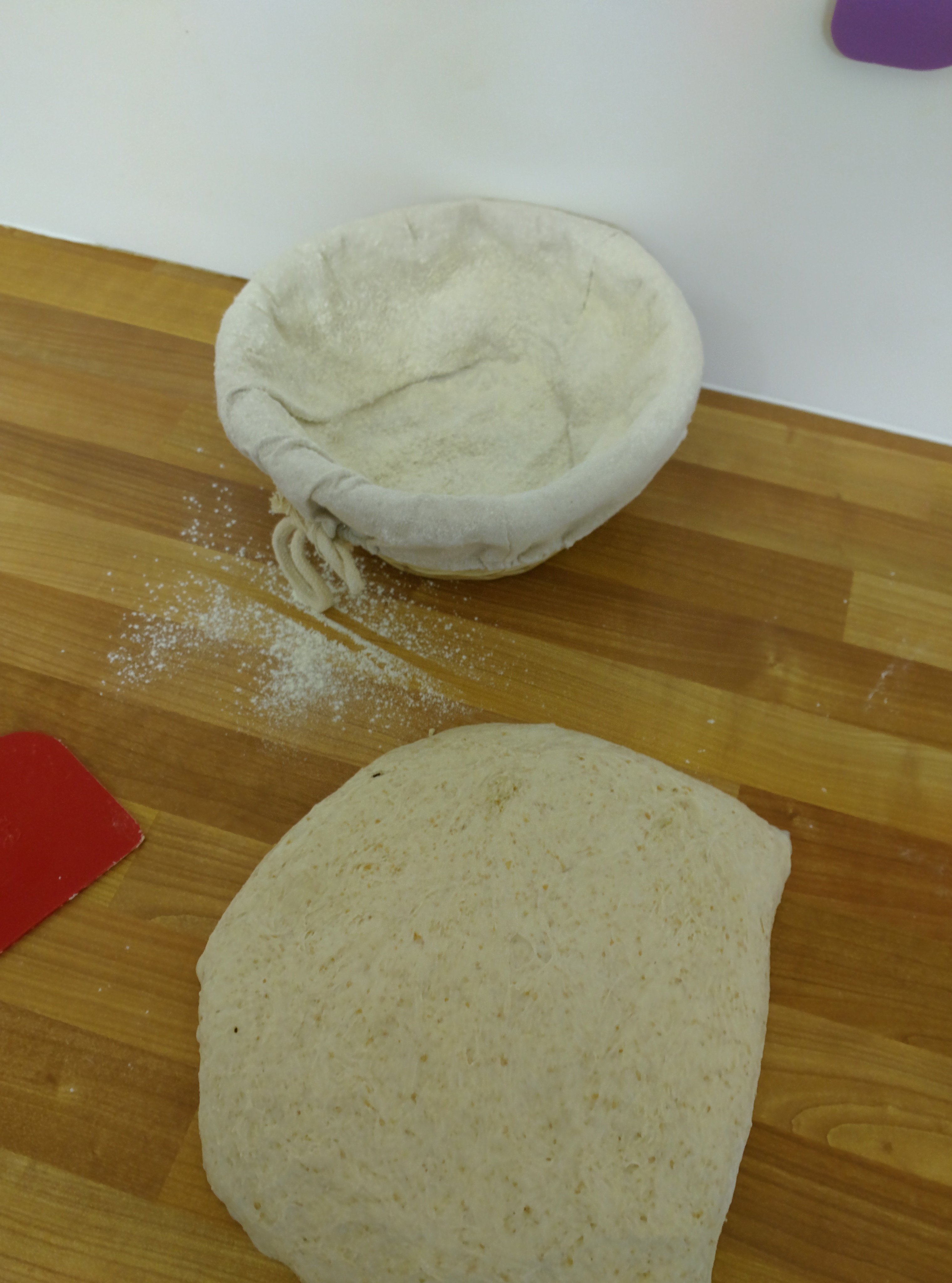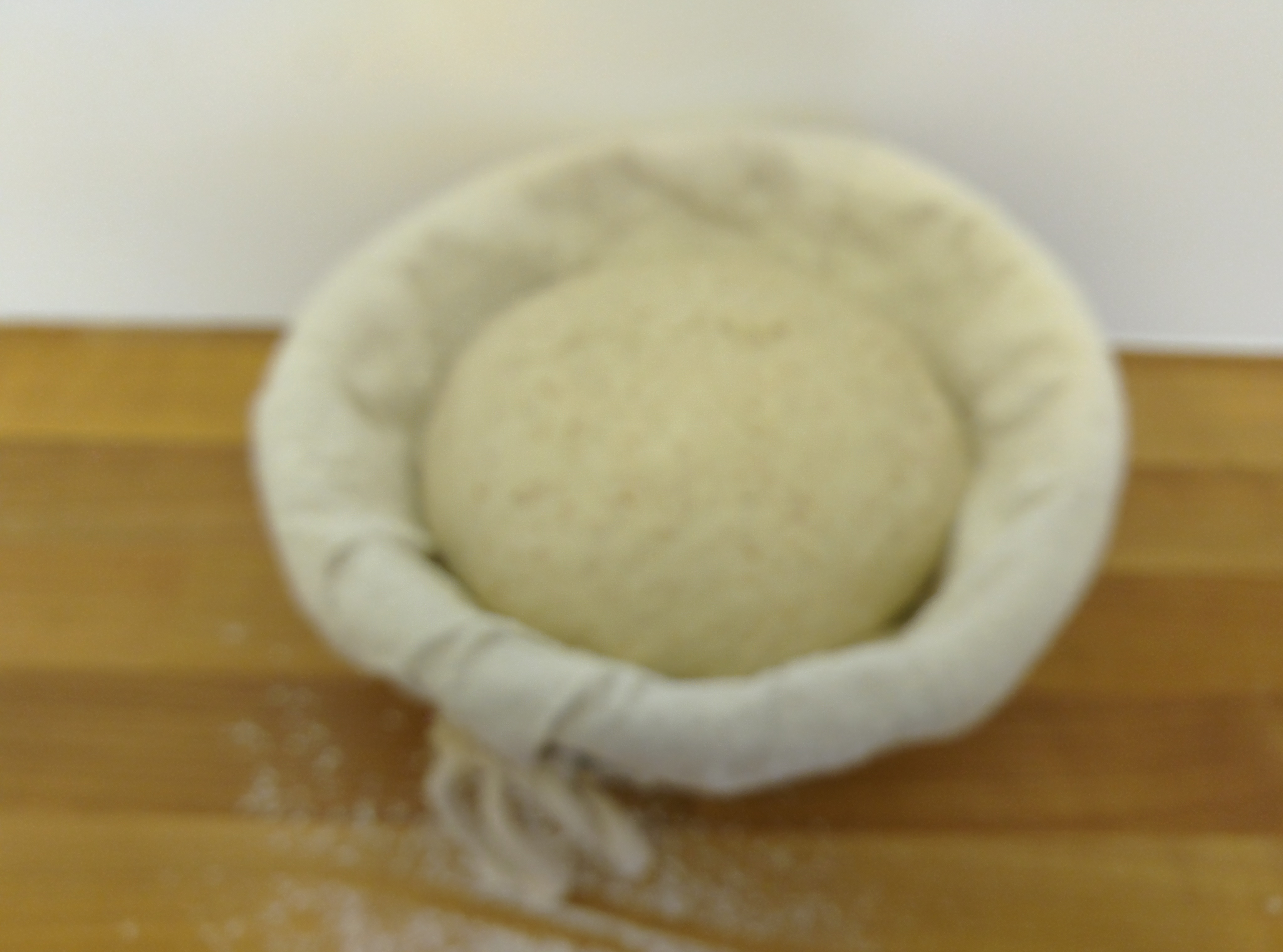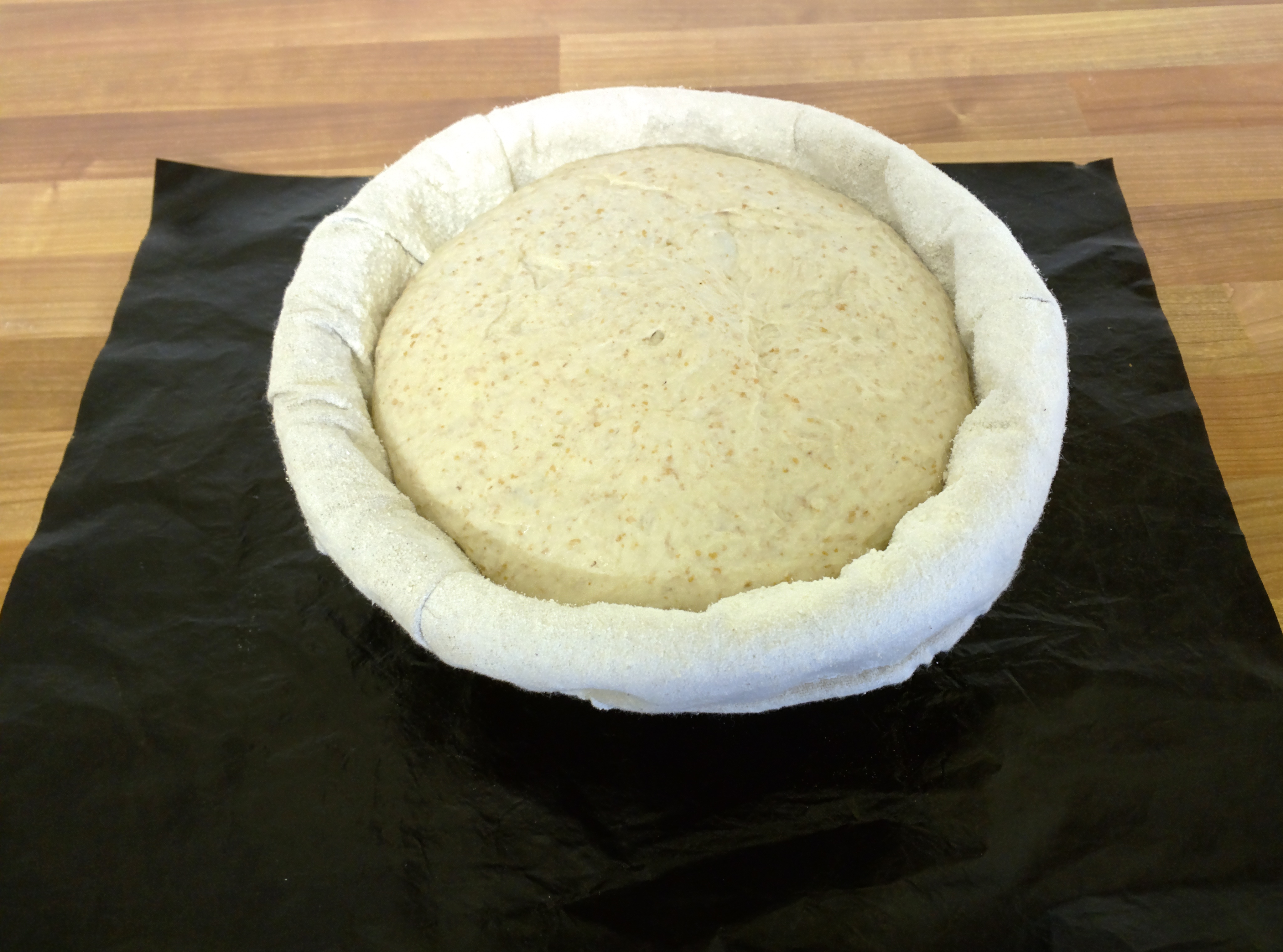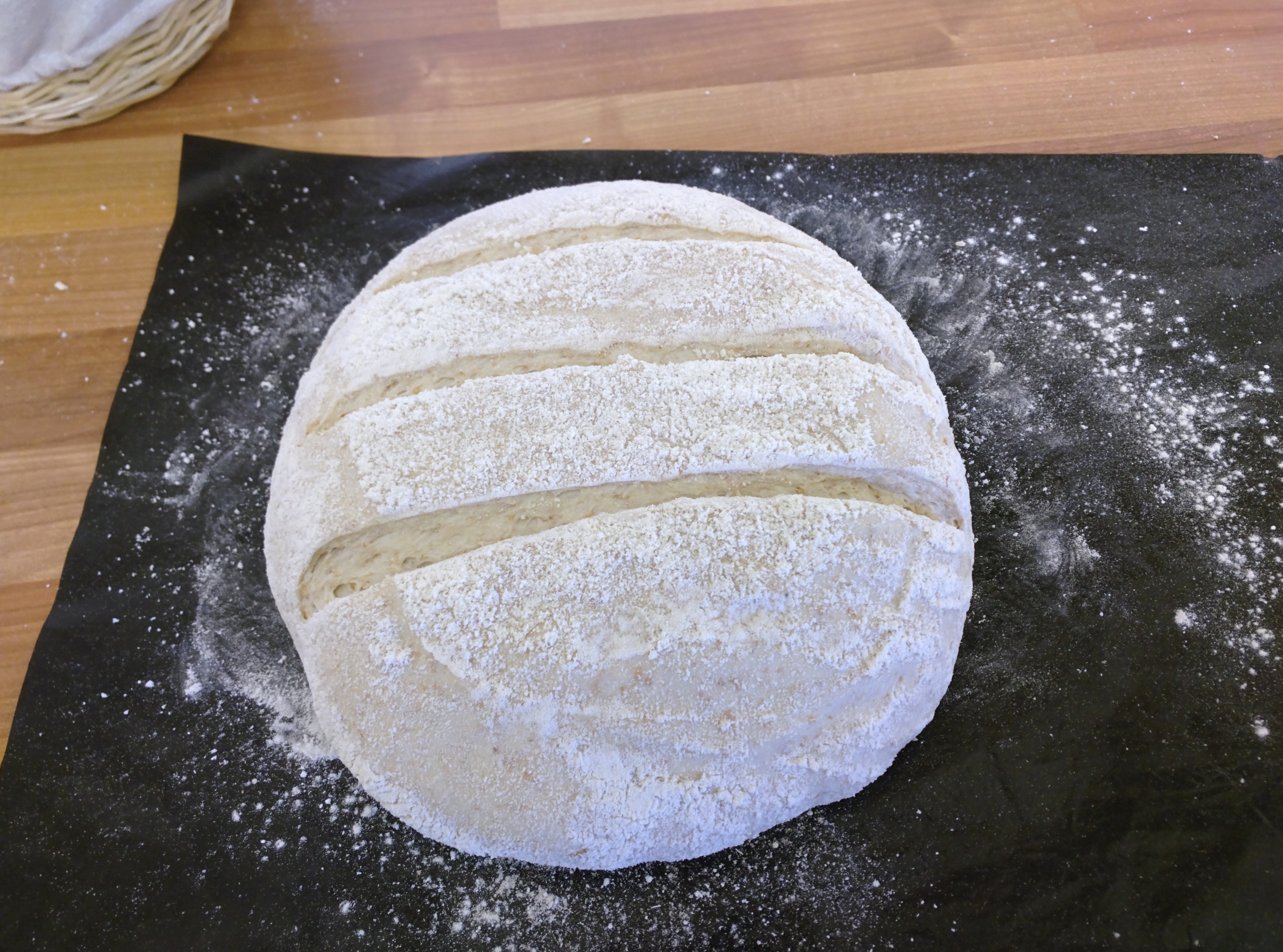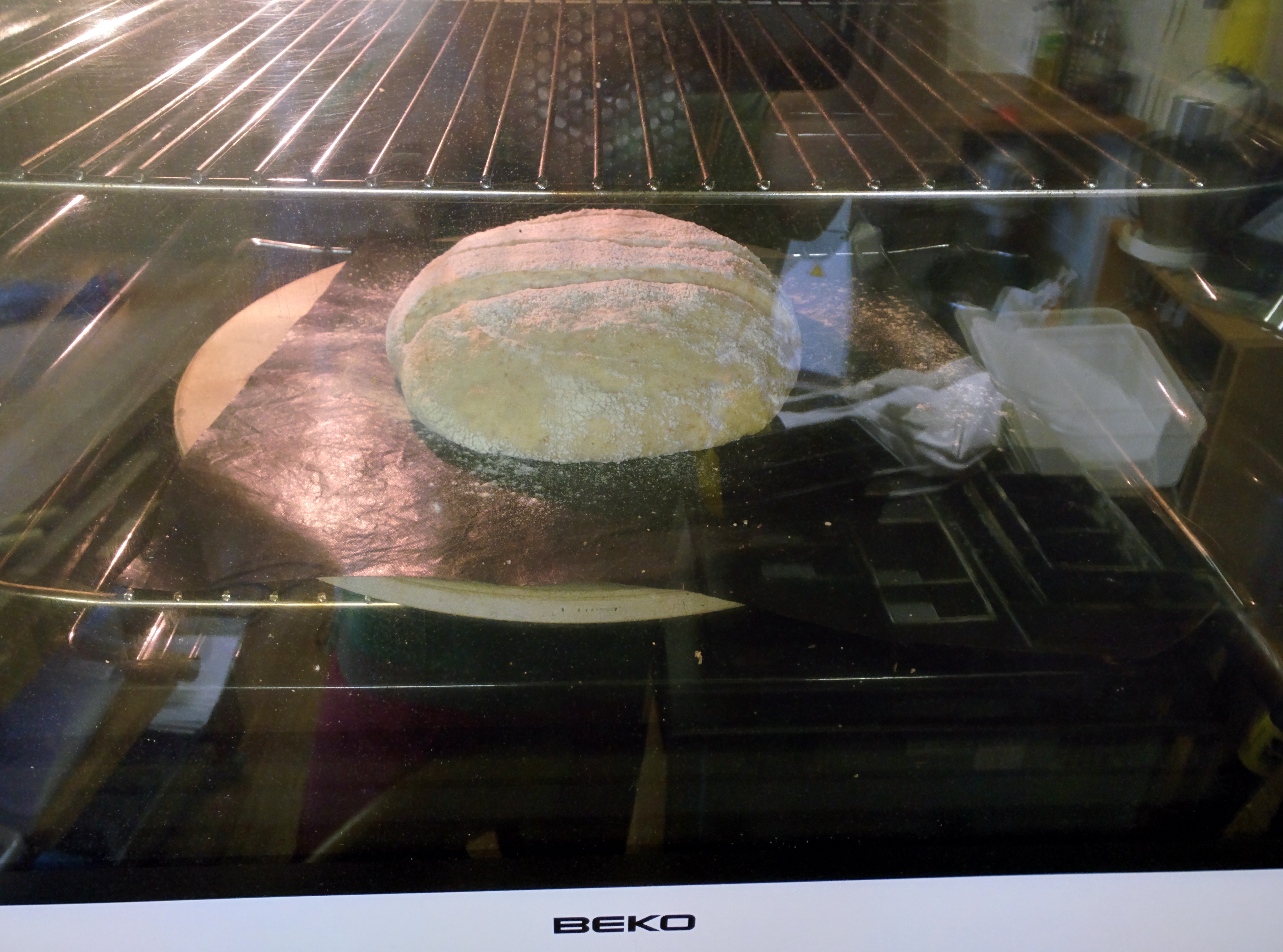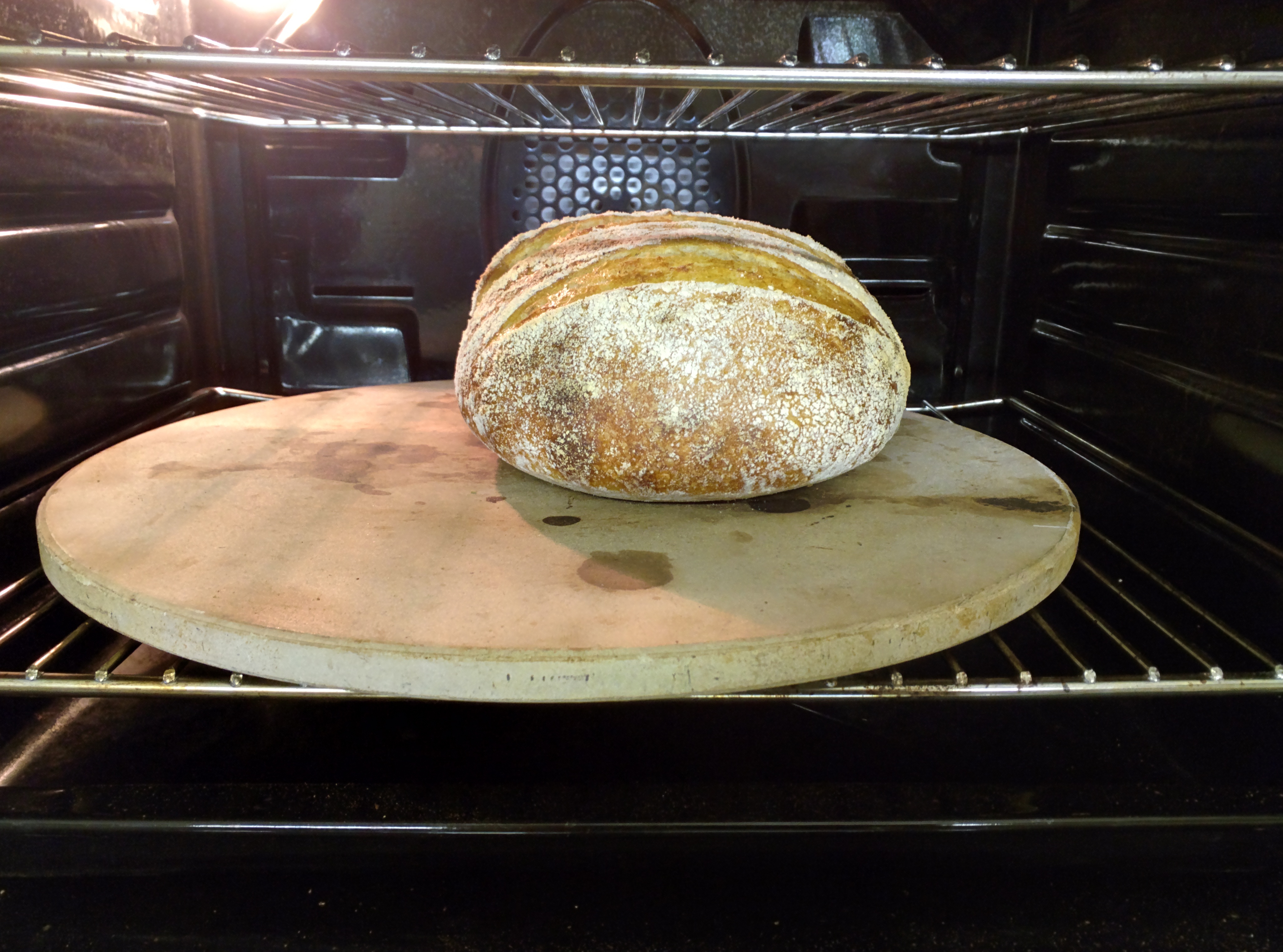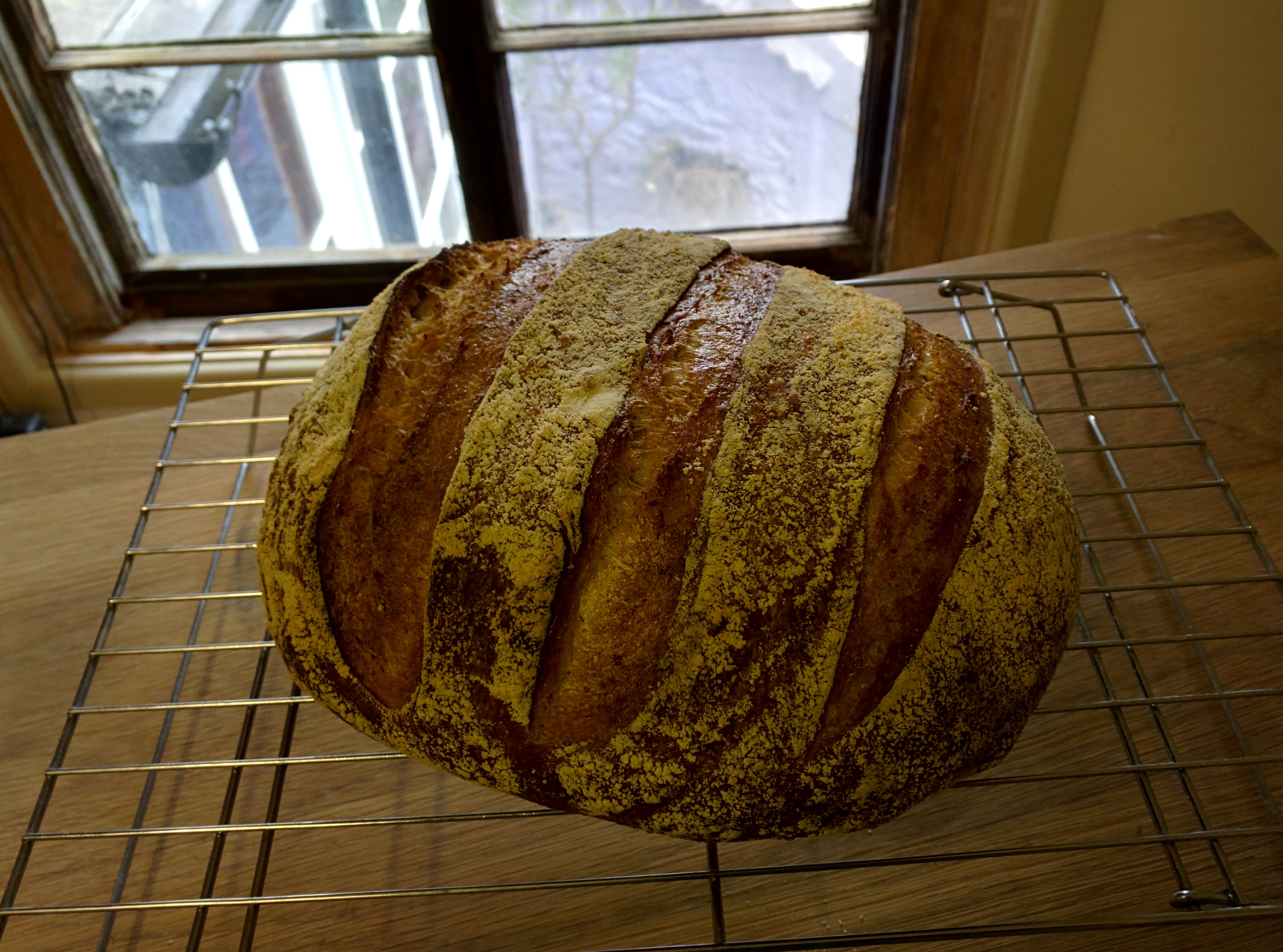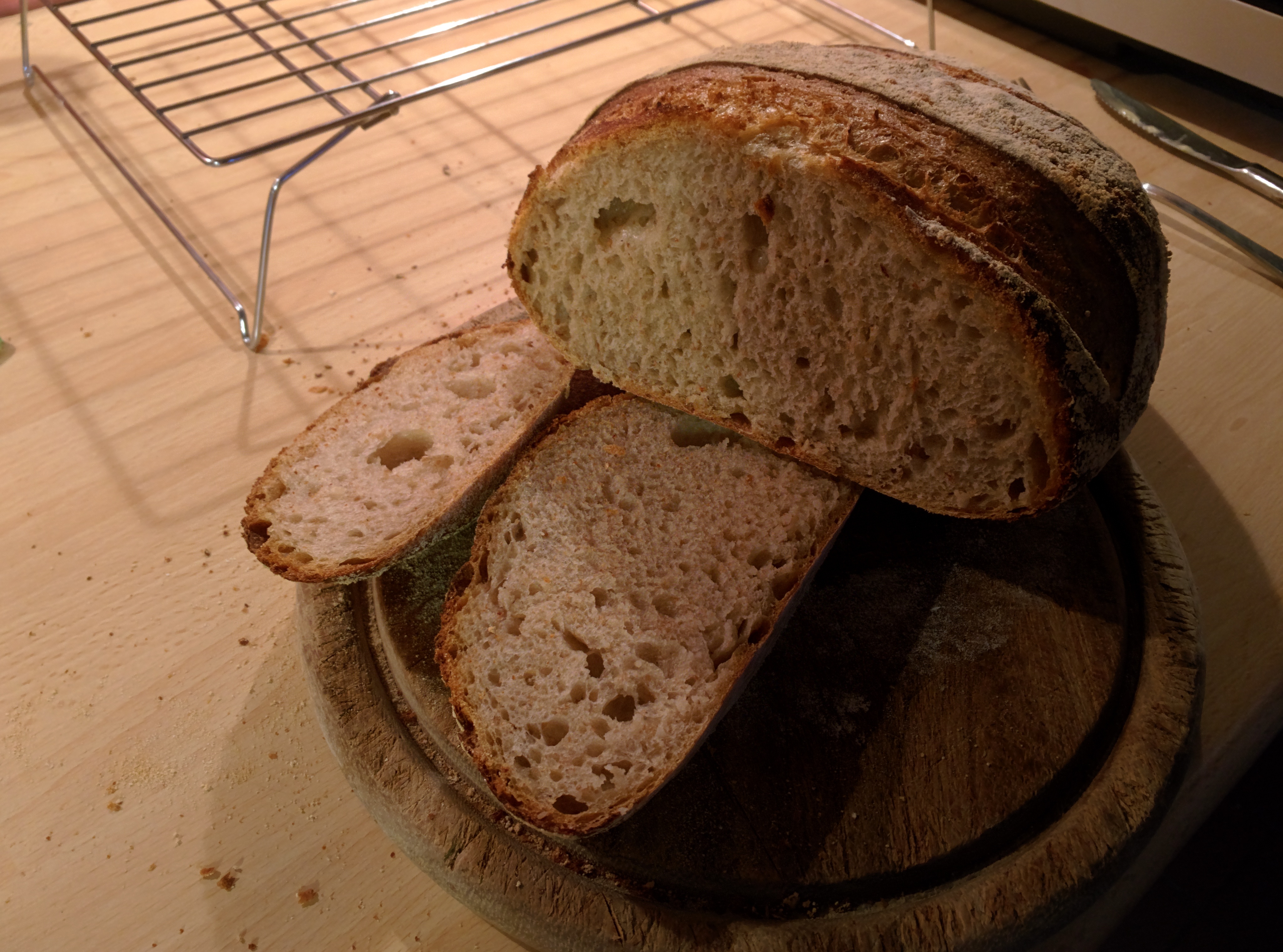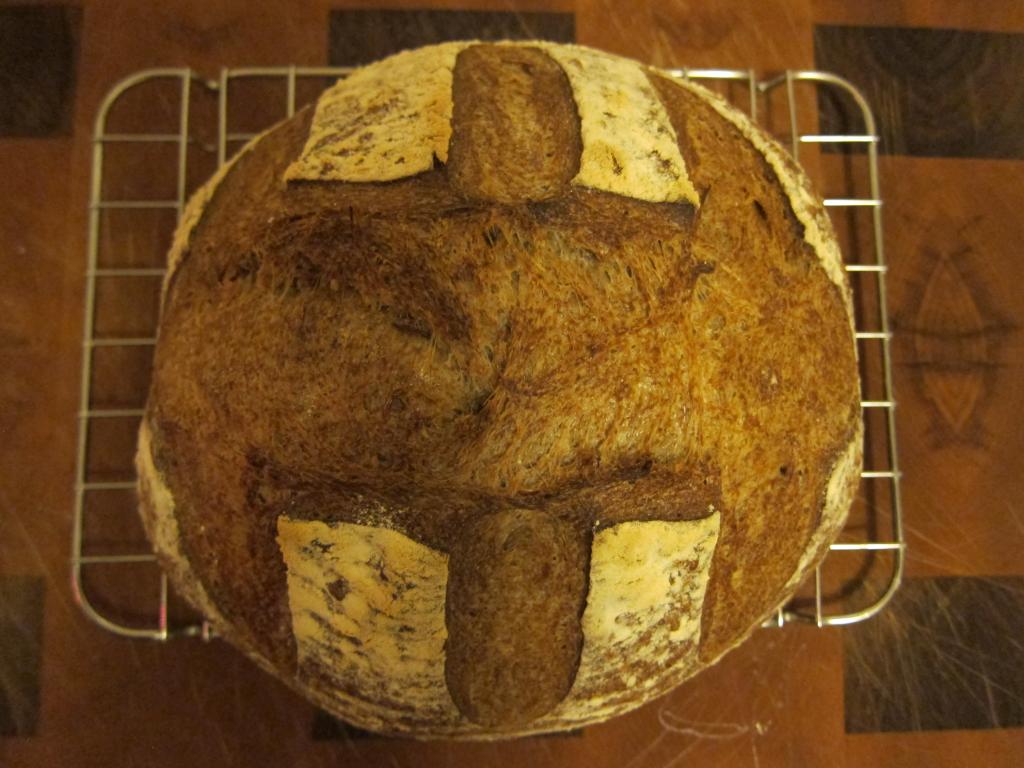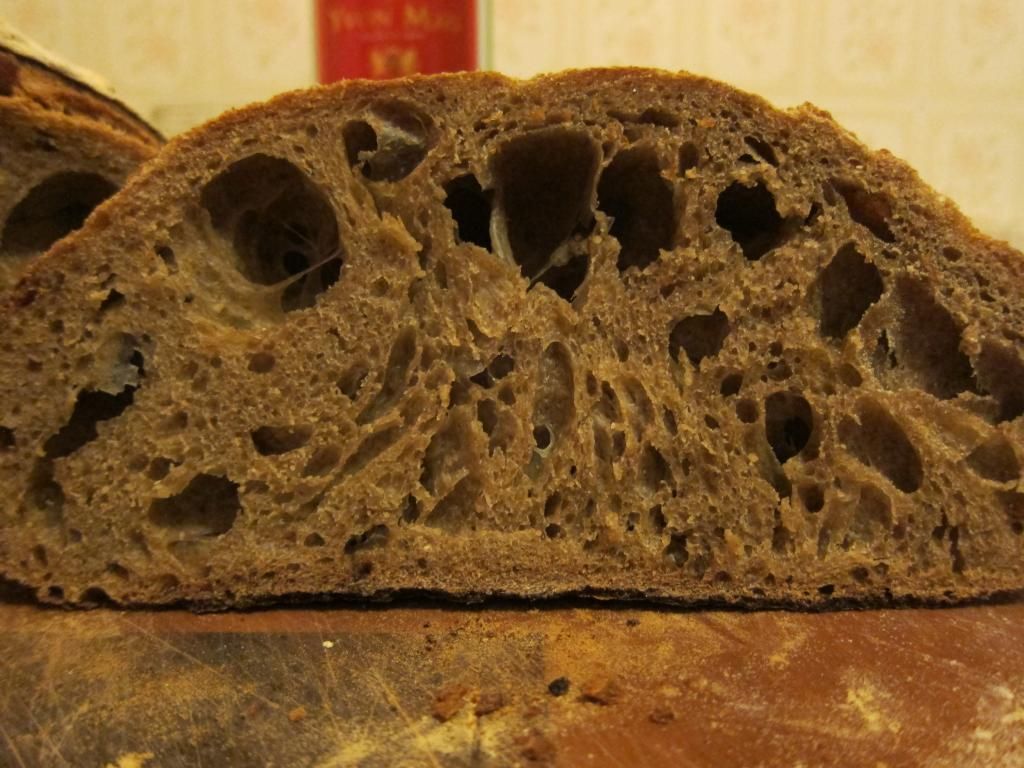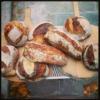This post has no pictures and is not going to interest a lot of readers since I did it to help my own understanding of what is going on in the oven. Writing it down forced me to explain more when I didn't understand why and fix apparent inconsistencies. If it is too much technobabble, just jump out and find something interesting. For those who wade through it, I welcome comments, corrections, clarifications, and questions. Just consider it a work in progress. When you understand this, you should be able to write the versions that apply to wood-burning ovens and deck ovens with external steam generators.
CONVERTING DOUGH TO BREAD BY BAKING IN A HOME OVEN
The modes of heat transfer from oven to bread include:
- Conduction (by direct contact with a hot surface)
- Convection (both natural and forced mechanisms from hot oven air)
- Radiation (the heat flow between the oven walls and the bread in the oven)
- Phase change (the evaporation of water from, and condensation of steam onto the dough surface)
For pan bread, the sides and bottom of the loaf are cooked by conduction of heat through the pan while the top is cooked by a combination of radiation, convection, and possibly condensing steam. The relative contribution from each mode is dependent on the oven, the temperatures involved, and whether there is any mechanical stirring of the air to enhance the convective heat transfer.
For freeform loaves baked on a metal pan, the bottom is cooked by conduction of heat through the pan while the remainder of the loaf is baked by other mechanisms. When the baking surface is tile or stone or firebrick (something other than a thin sheet of typically aluminum or steel), heat stored in the baking surface is transferred by conduction to the loaf which both heats the loaf and cools the baking surface. The rate of heat delivery to the loaf is determined by the mass of the cooking surface, the initial temperature of the material, the thermal conductivity of the cooking surface, and the specific heat (cp) of the cooking surface material as well as the density, thermal conductivity and cp of the dough. The rate at which the energy stored in the baking surface is replaced from the oven primary energy source depends on the geometry, surface temperatures and convective flows, and also on what else is simultaneously in the oven (e.g., other loaves of bread or other pans above or below).
There is always some amount of free convection in any oven, driven by the temperature distribution within the oven which heats or cools air causing it to expand and rise, or contract and fall as its density changes. This results in the top of an oven generally being hotter than the lower shelf positions. Convection ovens have mechanical fans that circulate air within the oven to both increase the heat transfer rate to the food and to achieve a more uniform temperature distribution within the oven (top to bottom, side to side, and front to back). Even the small fans in widely available home ovens deliver very high temperature uniformity and shorten baking times because they increase the heat transfer rate from the oven heat source to the food. The general guidance for using a convection oven is to reduce the temperature by 25°F and bake for the amount of time that is called for if you were using a conventional oven.
For most non-convection, non-steam injected ovens, radiation from the oven walls is the principle heat transfer mechanism. The Stefan-Boltzmann law governs radiation energy transfer between the oven surfaces and the bread. It takes the form of:
Qdot12= s A1 F12(T1^4 – T2^4)
where s is the Stefan-Boltzmann constant, A1 is an increment of oven wall area, F12 is a shape factor that accounts for geometry and surface emissivity, T1 is oven wall temperature and T2 is the bread temperature (both in °K). Note that the heat transfer rate Qdot is proportional to the difference between the fourth powers of the absolute temperatures. This is not (T1 - T2)^4, but T1^4 - T2^4 which is a really big number at typical bread baking conditions [T1 might be 250°C (523°K) and T2 might be 15°C (288°K) at oven entry]. At these temperatures, a 30°C reduction in oven wall temperature produces about a 20% reduction in radiant heat transfer rate and about a 13% reduction in convective heat transfer rate.
In steam-injected ovens, condensation of water on the surface of the dough delivers a lot of heat. The enthalpy of vaporization for water (2250 J/g), is more than five times the energy required to heat the same quantity of water from 0°C to 100°C (418 J/g) and is delivered directly to the surface of the dough when steam condenses. Steam does two things for you; it brings water directly to the dough which helps to fully gelatinize the starch forming a shiny, waterproof, gas tight membrane that prevents CO2 from escaping through the surface (thus forcing dissolved CO2 in the dough just under the skin to form blisters when it comes out of solution as the dough temperature rises to exceed the temperature at which the CO2 can remain dissolved). The cooked surface is also physically strong and cannot stretch to accommodate expansion of the trapped CO2 (oven spring) and will thus facilitate fracture along the lines defined by your lame when you slashed the dough (or randomly at weak spots if you forgot, or slashed ineffectively).
During the first few minutes in the oven, the dough is cool enough to condense steam on the surface, and the more steam there is in the oven the more effectively and rapidly it cooks what will become the crust. If there is inadequate steam, the dough will still cook, but the starch will not be fully gelatinized so that the crust is not as shiny or gas tight as you might desire and the coloration will be different and generally dull.
When the surface temperature of the dough gets high enough that it exceeds the local water vapor saturation temperature (oven dew point) steam no longer condenses on the crust. At this point, while the specific heat (cp) of unsaturated steam is somewhat higher than dry air (by about 2x), the dominant heat transfer mechanism in a non-convection oven switches over from phase change (condensing steam) to radiation (from the oven surfaces). In convection ovens, the size of the fan and the capacity of the heating elements will determine whether radiation or convection will be dominant. In most home ovens, the convection fan is adequate to maintain uniform temperature throughout and does increase heat transfer by about 15% above what it would be with radiation plus free convection, but does not provide sufficient air velocity to raise convective heat transfer to a point where convection dominates radiation as the mechanism for transferring heat to the bread. In commercial convection or combination ovens, the situation is reversed and since the heating elements and the convection fan are big and powerful, they transfer heat via convection considerably faster than radiation alone.
Gas ovens (with burners that share the bread baking volume) suffer from the absolute need to exhaust combustion gasses when the fire is on and in the process sweep out both the steam that is generated by combustion and any steam that is added to the oven (by both your steam generator and by evaporation from the bread dough itself). The conventional solution is to preheat the oven to very high temperature, include some additional heat storage capacity in the oven (tile, brick, stone, scrap iron), then turn off the gas and plug the vents after loading the bread until there is no additional value from further steam. At this point you can unplug the vents, re-ignite the flame, and remove your steam generator from the oven.
Crust thickness is determined by the depth to which the baking bread has been depleted of moisture, and is generally a function of both oven temperature and oven cycle time. If the oven is too hot, the bread will over-brown before it develops a thick crust. If the oven is too cool, the crust will be light in color even though it may be relatively thick.
When generating steam by boiling water inside the oven, some energy that would otherwise go toward raising the oven temperature is used to boil water. This can be a major factor in small ovens and is important to understand.
Bread loses about 15% of its initial weight to evaporation of water during the bake cycle, thus a 750g loaf will lose ~110g of water. It takes 2.13 BTU/gm to evaporate the water so you expend about 235 BTU in the process. That 235 BTU is about 68 watt-hours of energy, which you can allocate over the bake cycle and think of as reducing the effective power of the oven. For a 30 min bake cycle that is like reducing the 2500W heating element by 136w to 2364W except that the effective reduction is bigger at the beginning of the cycle than at the end because there is more water to easily evaporate at oven entry.
If you consume a pint (pound) of water in a steam generator, you will use 1000 BTU or 0.3 KWH to convert it to steam (plus 1 BTU for every °F that the initial average water temperature is below 212°F). A 2500W oven will take about 7 minutes to recover the heat lost to the steam generator, and for a 4.5 cu ft oven, it takes about 75g of water to produce enough steam to fill the oven. You will have to make an assumption about how tight your oven is but it would not be a bad assumption to guess that you lose one oven volume of steam per minute of active steaming. My observation is that after the first five minutes in the oven, the surface of the dough stops looking wet, and for rolls and small diameter loaves, they have completed almost all of their oven spring (note that there is an alternate view that says you should steam until the dough begins to brown – just figure out what works for you).
Seventy five grams of water takes 3.84 KW-minutes to boil, but you need 75g of steam per minute (about a pint for five minutes of steam if you leak at one oven volume per minute), so with a 2.5KW oven, if you don’t want to substantially cool off your oven in the process of making steam, you need some energy storage in the oven. Lava rock has a cp of around 0.2 so it takes a bit more than a pound of lava rock at 400°F to generate 5 minutes of steam, but that is not unreasonable since you will heat the rock up during your normal pre-heat cycle (I am assuming it takes 1 hr @ 500°F to get the lava rock thermally charged to 400°F in a non-convection oven). And you will want to use boiling water to charge the steam generator so that you don’t use another 20% of additional energy to heat the water up to boiling.

